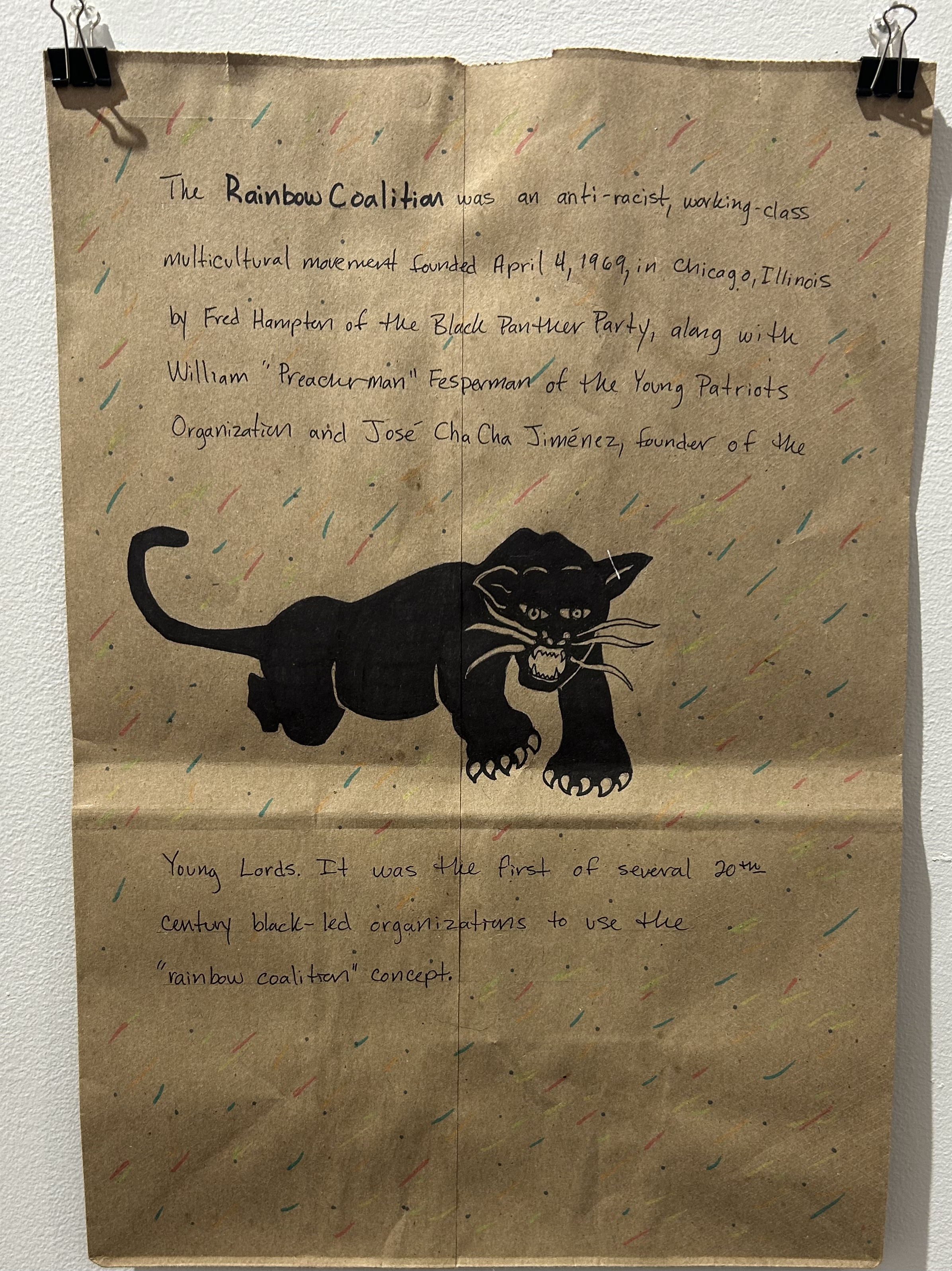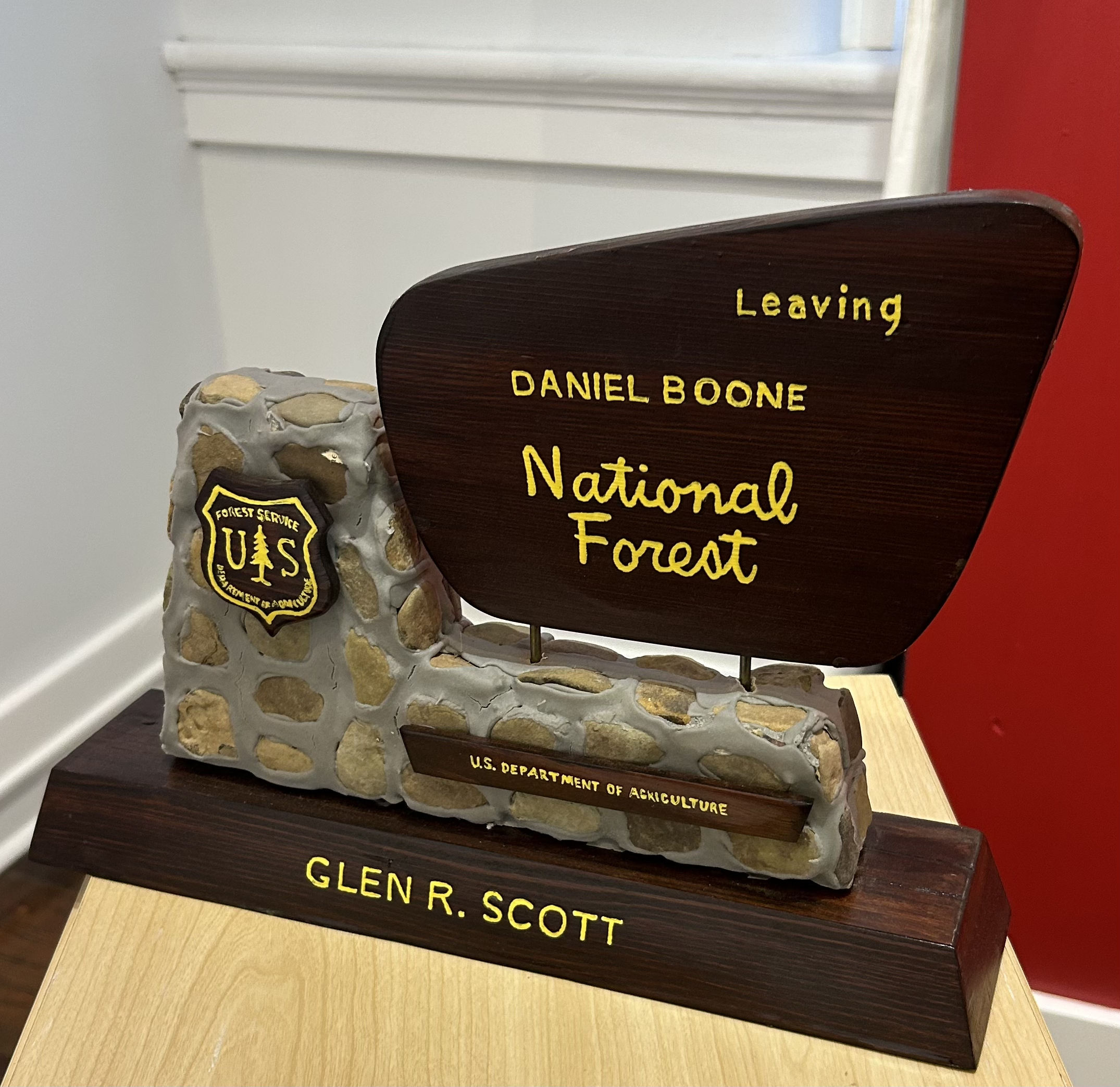Cultural Mosaics:
Honoring Black Life in Montgomery County, KY
This powerful exhibit takes you on a journey through the rich history, struggles, and remarkable achievements of Black people in Montgomery County, Kentucky. Featuring a collection of historical photographs, artifacts, and art by local Black artists, this exhibit highlights the resilience, strength, and contributions of the Black community to the fabric of the county. From the early days of segregation to modern-day triumphs, witness how perseverance and passion have shaped the local landscape. Creating a vivid narrative of history, culture, and the enduring spirit of the Black community in Montgomery County.
OPEN FOR IN-PERSON VIEWING JANUARY 25 - MARCH 15
VIRTUAL EXHIBIT BELOW
The Challenges of Documenting Local Black History
The process of documenting Black history in rural communities like Mt. Sterling & Montgomery County is fraught with challenges. Historical erasure, systemic racism, and a lack of resources have contributed to the scarcity of records and narratives about Black lives in these regions. Many stories have been lost due to the absence of preservation efforts, while others have remained untold because of historical neglect, systemic racism, and marginalization. Primary sources, such as photographs, oral histories, and documents, are often scattered or inaccessible, making it difficult to piece together a cohesive narrative.
Additionally, Black populations in rural areas, including Mt. Sterling & Montgomery County, have faced significant barriers to community sustainability. Outmigration, driven by economic necessity and the search for more inclusive environments, has led to a decline in Black populations in many rural communities. This demographic shift exacerbates the challenge of preserving history, as fewer individuals remain to share their stories and memories.
See a face you recognize with no name listed? Contact beth@grackentucky.org and let her know!
James E. Magowan
James E. Magowan (1870-1933) was a successful businessman and a community leader. He was born in Montgomery County, KY, the son of Amanda and John Wesley Magowan, and he was a brother to John, Noah, Susan, and Emily Magowan. The family lived in Smithville, KY. James Magowan, his brothers, and sister, Susan, all attended the Academy at Berea. As an adult, James Magowan was a real estate agent, loans and collecting agent, notary public, carpenter, contractor, and owner of the Magowan Theater and the colored skating rink in Mt. Sterling. James Magowan developed the Lincoln View Cemetery next to Olive Hill Cemetery in Smithville.
The Lincoln View Cemetery opened on April 1, 1929, with James Magowan as president, his son, Jesse E., 1st vice president, and his wife, Lizzie, his daughter, Sarah, and his son-in-law and daughter, Watson D. Banks and Estella Magowan Banks, were board members. James Magowan established a subdivision for African Americans next to the cemetery, and he owned and managed the waterline to the homes, charging a monthly fee for the service. He established the Mt. Sterling Colored Fair Association in 1909. He was owner of the James E. Magowan Grocery Store, which was located within the J. E. Magowan Hall (built in 1914) at the corner of East Locust and Fox Streets. James Magowan leased-out the grocery store and other space within the building.
James E. Magowan was also a school teacher for six years, and he led the effort to extend the gas line into Smithville. In 1915 he was president of the organization that had a sidewalk completed from the city limits of Mt. Sterling to the entrance of Olive Hill Cemetery. James Avenue in Mt. Sterling was named in his honor. James E. Magowan is buried in the Lincoln View Cemetery in Mt. Sterling, KY.
(Notable Kentucky African Americans Database)
Community
-

J. E. Magowan Hall
One of the largest and most complete building of its kind owned by a black person in Eastern Kentucky at the time
-

The Magowan Theatre - J. E. Magowan Hall
The Theatre which showed “Pictures of Quality” and “Refined Vaudeville”, was housed in J.E. Magowan Hall.
-

Montgomery County Colored Fair Association Poster, 1923
Highlights daily running and trotting races and lists P.L. Hensley as President and James E. Magowan as Secretary.
-

The Magowan Theatre Programme
1916, Thanking patrons and promoting the serial “Peg O’ The Ring.”
-

Stock Certificate for the Montgomery County Colored Fair Association, 1929
Issued to W.M. Anderson for one $25 share.
-

The Magowan Theatre Advertisment
-

James E. Magowan Real Estate Advertisment
-

Advertisment, 1916
Sales, Movie Showings, and Events
-

Advertisment, 1916
Sales, Movie Showings, and Coupons
-

Montgomery County Colored Fair Ad, Hazel Green Campaign Ad
-

P.L. Hensly's Racehorses "Alceo" and "Templebar"
-

The Reporter, Mt. Sterling, KY, April 14, 1906
Includes portraits of N. W. Magowan and J. D. Magowan, various articles, a subscription notice, and an editorial titled “Second Miles: one.”
-

"Horse Jockeys, Typical County Court Day Scene on the Streets of Mt. Sterling"
-

Stockton’s Electric Dry Cleaning, c. 1910
Owned by E.W. Stockton. Mr. Stockton was also a tailor by trade. Courtesy of Montgomery County History Museum.
-

Barber Shop in the Redmond Building
Courtesy of Laura Tipton.
-

V.M. Hainline’s Grocery Store, c. 1910
Courtesy of Montgomery County History Museum.
-

Fireman Booker T. George, Jr. at a House Fire on Mitchell Street, March 1987
Courtesy of Booker T. George.
-

Booker T. George, Sr., Elizabeth Coleman, Sarah Margaret Long, Ellis George, 1940
Names listed left to right. Courtesy of Booker T. George.
-

Mr. Allen Hodges Playing the Drums
-

The Mt. Sterling Cornet Band
-

Allen Hodges, Sammy Robertson & the Band
-

Anna Jewell Black, unknown, India Thomas Davis, Miss R. Mildred Gatewood, and J. Roger Jones.
Names listed left to right. Courtesy of Brenda Ralls.
-

Dr. Martin Luther King Jr. March, c 1970.
KMSE Pastor and Sister Roy Hudson with Booker and Violet George. Courtesy of Booker George.
-

Gertie and Bill Williams, Maggie Mynhier Jackson, Odie Mae Mynhier Gay, Oscar Gay, Fred Henderson, Charlie Gay, and Fannie Williams.
Names listed left to right with Fannie in front. Courtesy of Reese Gay.
-

Walter Owings, Ethel Gay, Henery Brown, Sr., and Ida Gay on West Locust Street.
Courtesy of Brenda Ralls.
-

Funeral Director W.D. Banks in White With Mourners Attending a Funeral at High Street Christian Church.
Courtesy of Booker T. George.
-

The Moxley Family, 1911
Courtesy of Ann Dragoo.
-

Wayne and Dwayne Green, 2018
Wayne Green had been a Mt. Sterling police officer for 21 years when he was named acting chief and made history.
He is the first Black person to hold the position since the town was established in 1792. Above, Wayne left is pictured with his identical twin brother, Dwayne Green.
"We've been best friends for 55 years," says Wayne. Dwane is a retired Winchester police officer.
Photograph: Liam James Doyle
-

Dr. Carmella Fletcher-Green hugs Juanita Vice at Windsor Care Center, 2018
Carmela Fletcher-Green's dedication to medicine began in childhood. In high school, she volunteered 3,000 hours at Mary Chiles Hospital, now St. Joseph Mt. Sterling.
Determined and with help from her community and high school, she earned a degree in biology and an additional bachelor's in physician assistant studies at the University of Kentucky. "Choosing to be a PA has been a blessing to me," she says.
-

Tony Douthitt and His Mother, Irene Douthitt, 2018
Tony Douthitt sometimes wakes at 3 a.m. to his 99-year-old mother asking if it's time to go to church. Nearly every other day, Irene Douthitt wonders what day it is.
Tony has been baking for 42 years. It began as a hobby he discovered when he was a teenager. He is also an amazing vocal artist.
Tony's mantra is, "My thing is, you be nice to other people, they'll be nice to you."
P.W.L. Jones
P.W.L. Jones was born in 1878 in Mt. Sterling, Kentucky to Daniel and Sue (Thomas) Jones. His father, Daniel Jones, served in the Union Army from 1864 to 1866. Named William Lawrence Jones at birth, P.W.L. Jones earned the nickname of "Paul" from classmates because of his early love of history and interest in John Paul Jones.
An 1898 graduate of KSU (then Kentucky Normal School for Colored Persons), P.W.L. Jones later went on to become a professor of history and Academic Dean at KSU (then Kentucky Normal and Industrial Institute). He worked at KSU between 1907 and 1928. Along with teaching and administrative duties, he also helped form and served as coach and manager of early baseball, football, and track teams at the school, which earned him the title of "Father of Athletics."
Incorporating his interest in education and athletics, Jones was a member of the Kentucky Negro Education Association, wrote a column for Spalding's Football Guide from 1928 until his death, contributed articles to The Crisis and wrote and published A History of K.N.I.I. in 1912. Jones used one of these volumes to record updates on the faculty, staff and alumni up through 1920.
(Kentucky State University)
School
-

The DuBois School (1939-1964)
Mt. Sterling DuBois School was a Rosenwald School built in 1929. This school taught grades 1-12 until August of 1964, as Black parents were preparing to boycott the city schools to protest a change in school integration plans, the school was burned down. Suspected arson involving kerosene. The one building that stands today is the gymnasium, which is now The DuBois Community Center.
-

The DuBois Community Center, 2025
-

The DuBois School Band
-

DuBois School Cheerleaders at Downtown Mt. Sterling Parade
Circa 1950s/60s
-

Mr. Elster
11th and 12th grade teacher at DuBois. He taught chemistry, geometry, shop, and agriculture. Courtesy of Brenda Ralls.
-

Students in the Library at DuBois School
Right to left: Miller Jones, Georgia Mack, Algetha Stockton, Janetta Hawkins, and James B. Smathers. Courtesy of Brenda Ralls.
-

The DuBois School Football Team
-

Sallie E. Fletcher
She graduated May 14, 1937 at the Montgomery County Training School aged 18. Courtesy of Brenda Ralls.
-

Booker T. George
Samuel Keas
Samuel Keas was a land owner, farmer, and cattle owner. Keas Street in Montgomery County, KY is named for him.
In 1878 Keas became the first pastor and namesake for the Keas Tabernacle C.M.E. Church in Mt. Sterling, KY. Along with Bishop Miles from Louisville, KY and with the aid of Mrs. Eliza Magowan and Mr. Willis Magowan, Keas organized the church in a former school building. Future additions to this small church would be built around the existing structure, but the footprint remains the same, even today. Keas was a well-known and respected preacher prior to the Civil War, serving as a beacon to the black community in Montgomery County.
On August 17, 1856 he conducted a baptism at Lublegrud Creek in Montgomery County and performed the marriage of Patsy Magowan to Edward Howard on September 18, 1858. Samuel and his wife Nannie [Rebecca] had three children: daughters Amanda and Betty and son Allen.
(Notable Kentucky African Americans Database)
Churches
-

The KEAS Tabernacle Christain Methodist Episcopal Church
-

The KEAS Tabernacle Christain Methodist Episcopal Church Sunday School Officers and Teachers
-

Evergreen Baptist Church Sunday School Officers and Teachers
-

The Knights of Pythias, at High Street Christian Church, 1915
Courtesy of Booker T. George
-

The KEAS Tabernacle Christain Methodist Episcopal Church Collection Card
-

The Loyal Ladies of the Knights of Pythias at High Street Christian Church, 1915
Courtesy of Booker T. George
-

Gregory Bonner Pauses for His Daily Prayers in the Sanctuary of KEAS Tabernacle Christian Methodist Episcopal Church, 2018
William Wells Brown
William Wells Brown (1814–1884) was an American abolitionist, novelist, playwright, and historian. Born into slavery near Mount Sterling, Kentucky, Brown escaped to Ohio in 1834 at the age of 19. He settled in Boston, Massachusetts, where he worked for abolitionist causes and became a prolific writer. While working for abolition, Brown also supported causes including: temperance, women's suffrage, pacifism, prison reform, and an anti-tobacco movement. His novel Clotel (1853), considered the first novel written by an African American, was published in London, England, where he resided at the time. It was later published in the United States.
Military
-

Service Recruitment Poster
Historic Civil War–era recruitment poster urges “Men of Color” to enlist in the Union Army, calling it a fight for liberty and survival.
-

Samuel Jones Declaration of Recruit
Historic Civil War–era “Declaration of Recruit” document dated June 4th, 1864, for Samuel Jones of Montgomery County, Kentucky, who volunteered in Greensburgh, Pennsylvania. The form is handwritten and signed, detailing his enlistment in the U.S. Army for a three-year term.
-

Samuel Jones Enlistment Form
Official 1864 enlistment form for the United States Colored Troops, signed by Samuel Jones of Montgomery County, Kentucky. The document confirms his commitment to serve three years in the Union Army, swearing allegiance and fitness for military duty.
-

WWII Veterans
Right to left: Everett “Pappy Jones, unknown, Walter Jones, L.C. Black, William Elster, Harrison Jones. Courtesy of Brenda Ralls.
-

WWII Veterans
Courtesy of Brenda Ralls.
-

American Legion Post 222 Ladies Auxilliary and Their Husbands, WWII
Courtesy of Brenda Ralls.
-

Edward Jones, WWII
Montgomery County Draftee. Courtesy of Brenda Ralls.
-

Ernest Coons, WWII
Montgomery County Draftee. Courtesy of Brenda Ralls.
-

Mr. Overstreeet “Chalk Eye”, WWII
Montgomery County Draftee. Courtesy of Brenda Ralls.
-

Allen Hunter Barnes, WWII
Montgomery County Draftee. Courtesy of Brenda Ralls.
James Mitchell
James Mitchell (1859–1882) was a Black man from Montgomery County who was lynched in downtown Mt. Sterling on June 15, 1882.
According to genealogist Vicki Wells Cox of Past Generations LLC, "On June the 14th, 1882, Mr. Mitchell was at work." Around lunchtime that day, she explains, there was an altercation. "According to the victim—the alleged victim—it involved a white woman."
Following the incident, the sheriff brought Mitchell to the jail in downtown Mt. Sterling. Later that night, he was forcibly removed. "At 9:00 that night, five masked gunmen came... they took him to the railroad trestle, which was in one of two possible locations," says Cox. No one was ever held accountable for the lynching.
In 2015, the Equal Justice Initiative (EJI) launched a nationwide effort to acknowledge and commemorate victims of racial terror through its Community Soil Collection Project. The initiative invites local communities to collect soil from lynching sites as a tangible way to confront the legacy of racial violence and to honor those who were killed. These jars of soil are now part of an exhibit at The Legacy Museum in Montgomery, Alabama, which features over 800 jars collected from across the country.
“In this soil, there is the sweat of the enslaved. In the soil, there is the blood of victims of racial violence and lynching. There are tears in the soil from all those who labored under the indignation and humiliation of segregation. But in the soil there is also the opportunity for new life—a chance to grow something hopeful and healing for the future.”
— Bryan Stevenson, EJI Executive Director
Local leaders, NAACP representatives, and members of EJI gathered at the site of James Mitchell’s lynching to share his story, honor his life, and participate in the soil collection project. One jar of soil was sent to Montgomery, Alabama, where it joins hundreds of others memorializing Black individuals who were lynched. The second jar remains in Mt. Sterling as a local reminder of the tragedy and its enduring impact.
James Mitchell’s name is among more than 800 engraved on monuments at the National Memorial for Peace and Justice, where steel columns commemorate African Americans lynched across the United States between 1877 and 1950.
Struggle for Equality
-

Bill of Sale for Enslaved Woman Named Eliza, 1848
Handwritten bill of sale documenting the sale of an enslaved woman named Eliza for $650 by Anderson Alexander, related to the estate of Shelby Waller. The note is signed and witnessed, evidencing the legal trade of enslaved people.
-

Letter of Endorsement for Slave Recovery Request – Mt. Sterling, KY, 1863
Handwritten letter, dated July 25, 1863, was written by Capt. W.S. Williams to Col. Gilbert, endorsing local citizen Anderson Chinault. In the letter, Capt. Williams vouches for Chinault’s character and loyalty to the Union, describing him as “as true a Union man as any in the state of Ky.” The purpose of the letter is to request assistance from Union forces in locating and returning an enslaved person who had escaped from Chinault several months prior. The letter is co-signed by multiple officials, including the provost marshal, court attorney, and other regional authorities, reflecting the cooperation between local leadership and Union forces in upholding slavery despite the ongoing Civil War.
-

Bill of Sale for Enslaved Boy Named James, 1833
Handwritten bill of sale documenting the sale of a 15-year-old enslaved boy named James to Anderson Chenault for $500, warranting him as “sound and healthy.” Signed by Isaac Oliver and witnessed by others.
-

Newspaper Clipping, "Swift Vengeance: A Brutal Ravisher Hanged From A Railroad Bridge", June 15th, 1882
Reports the lynching of Jim Mitchell in Mt. Sterling, Kentucky, using racially charged and inflammatory language to justify mob violence following an unproven accusation.
-

Newspaper Clipping, "2 Negro Buildings Burn in Kentucky", August 30th, 1964
As Black parents were preparing to boycott the city schools to protest a change in school integration plans, The Dubois School was burned down. Suspected arson involving kerosene.
Also burned was a building owned by local NAACP leader W. D. Banks.
Nancy Green
Nancy Green (1834-1923) was born enslaved in Mt. Sterling, in Montgomery County, Kentucky. Sometime during her late teens, early twenties Green obtained her freedom and began work in Covington as a nanny and housekeeper for the Walker family. The family relocated from Covington to Chicago, taking Green with them.
Years later, on the recommendation of Walker’s son, then a judge, Green was hired by the R.T. Davis Milling Company in Missouri to represent “Aunt Jemima,” an advertising character named after a song from a minstrel show. She was the woman who served as the face of one of the most popular brands for more than 100 years.
Green made her debut at the 1893 World’s Columbian Exposition held in Chicago, embodying the intentionally designed role of America’s “Mammy,” “Aunt Jemima.” Although Aunt Jemima became a household name for a century, the world does not know that Green defied the mammy caricature’s derogatory image.
Green was a philanthropist who was one of the founding members of the Olivet Baptist Church, once the largest African-American church in the United States, with a membership at that time of over 9,000. Green used her economic power to advocate against poverty and support organizations fighting for equal rights.
(Kentucky Center for African American Heritage)
Art
























